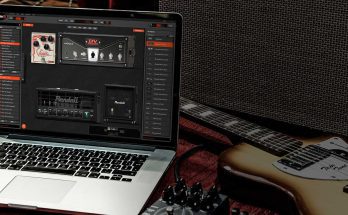KURZWEIL K250 + K1000Kurzweil K250 was the first keyboard to reproduce discrete signals using an oscillator. It is the result of collaboration between Raymond Kurzweil, Stevie Wonder, Alan Perlman (founder of ARP), Bob Moog and other music engineers.
The Kurzweil K1000 was a lighter model with a 76-key keyboard, but offered more sounds. Two mid-1980s and early 1990s studio icons with unique histories and sounds come to life in the U1250, a handy modern instrument with vintage digital colors.
To work with the bank, you need the popular UVI Falcon or the popular UVI Workstation
The K250 was first introduced at NAMM in 1983 and was produced until 1990. It was used by a huge number of famous musicians such as Stevie Wonder, Paul McCartney, Billy Joel, Andrew Lloyd Webber, The Who. The Kurzweil K250 was also the first ROMpler capable of reproducing acoustic sounds using ROM.
It is also considered the very first Audio Workstation. It had an impressive 24-voice polyphony and a solid 88-key weighted keyboard. The K250 was designed for live performance. The Kurzweil K250 is recognized as the world’s first digital sample synthesizer and began the era of electronic music. The K250 stored digitized fragments of sounds from live instruments in its memory and had a unique velocity-sensitive keyboard.
The quality of sound synthesis was exceptionally high – during test listening sessions, professional pianists could not distinguish the sound of the K250 from a concert grand piano. But what was truly unique about all Kurzweil musical instruments was the “invisible computer” architecture. In fact, it played the role of a tunable digital signal processor (DSP), which allowed extremely fine control of all parameters of the virtual audio path. Building on this success, the Kurzweil K1000 was released with a lighter 76-key keyboard. It offered more sounds and was portable with a simplified control panel.
When creating the U1250, we decided to tackle two legendary machines: the K250 and the K1000. We have programmed a wide range of sounds including acoustic and electric pianos, bells, percussion, drums, guitar, bass, pads, brass, brass and other orchestral instruments. The U1250’s tones create a vintage, nostalgic feel thanks to the typical early digital sampling nature of these instruments. The cars have been carefully selected to provide authentic gameplay and dynamic sound that will make you feel like you’re playing on the original car.
All the sounds present in the U1250 can serve as inspiration or a starting point for your own sonic creations. ADSR amplitude envelope, multi-mode filter with ADSR envelope, stereo unison, legato, built-in noise generator, as well as quick assign modulation wheels, modulators and high-quality UVI-signed effects allow you to quickly tailor the sound to suit your preferences. according to your needs and easily transform it into something completely new.
Copy R2R keys (files with *.R2RUVI extension) to C:\ProgramData\UVI\R2R
Each library has its own R2R key.
Create a folder to store your libraries wherever you want.
Call it whatever you like, for example UVI SoundBanks.
Place UVI libraries (files with *.ufs extension) into this folder.
In Falcon, specify the path to this folder in this way:
Find Preferences, you can simply press Cntr+P Open the SoundBanks bookmark . Specify the path to the folder(s) where you placed the libraries: Go to the browser on the right and point the small arrow opposite the Soundbanks inscription The browser view will change: You can scroll if there are a lot of libraries: But when there are too many libraries, it’s easier to find like this:




